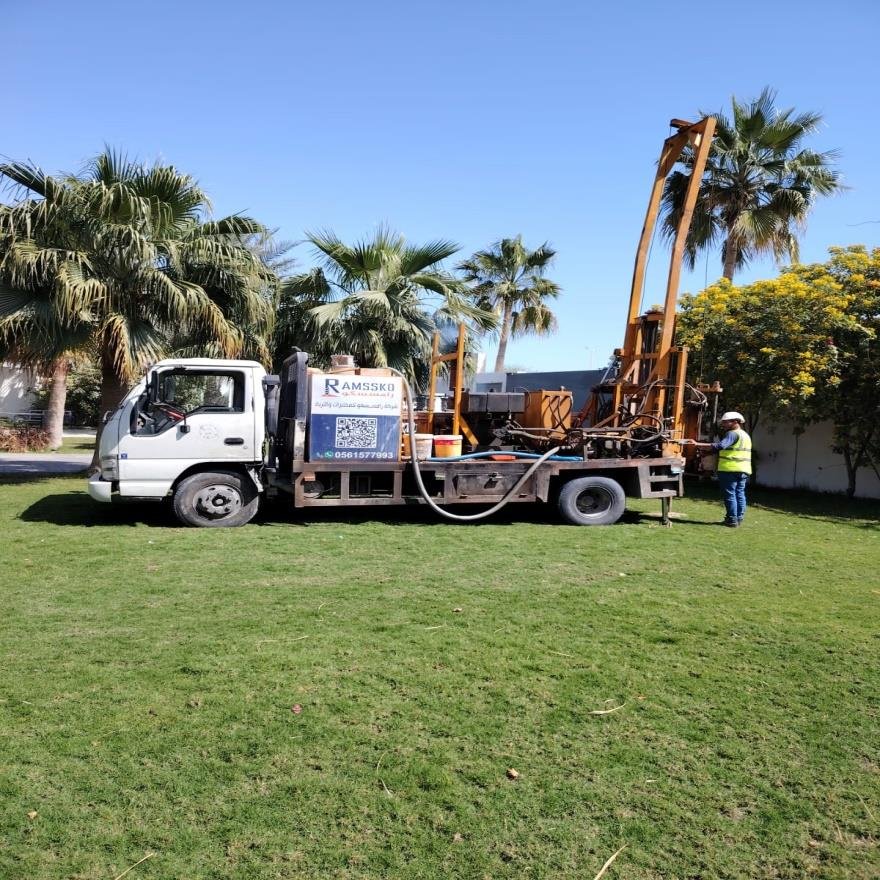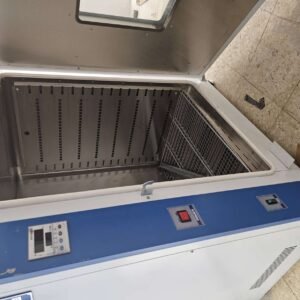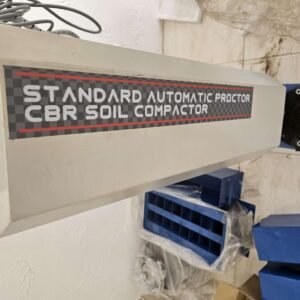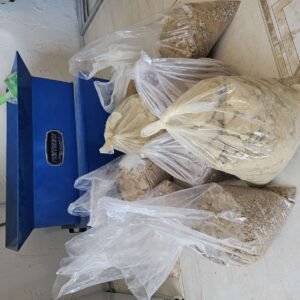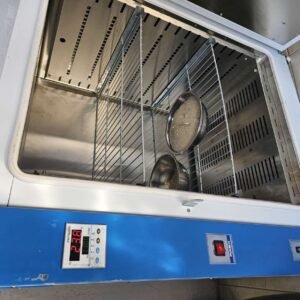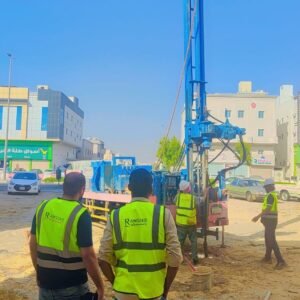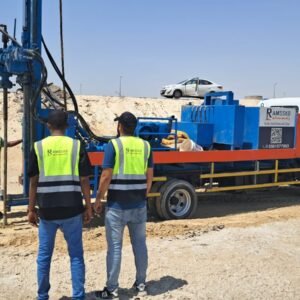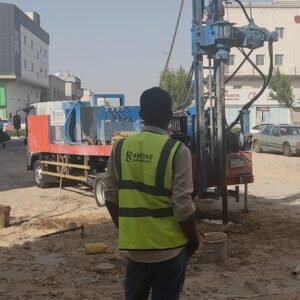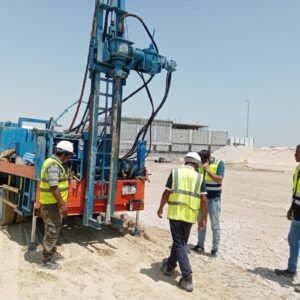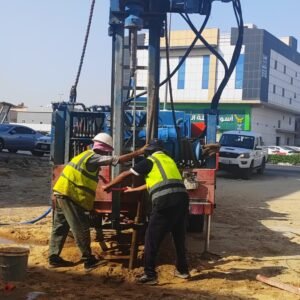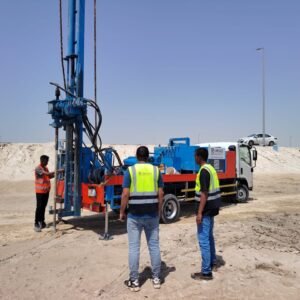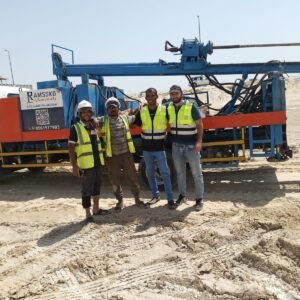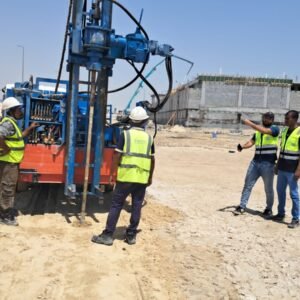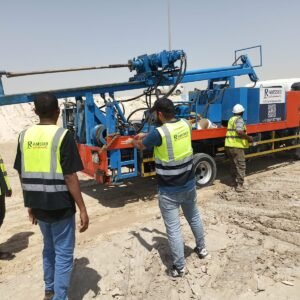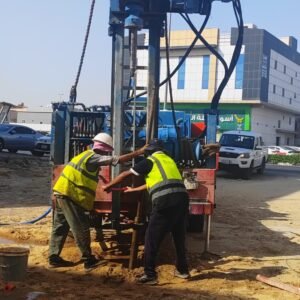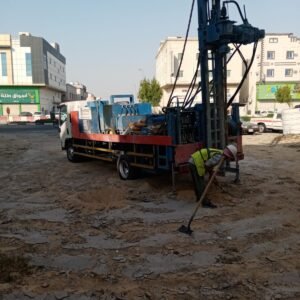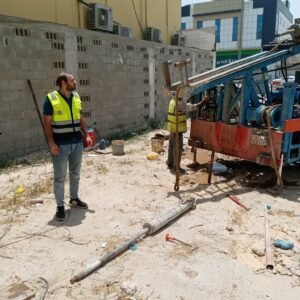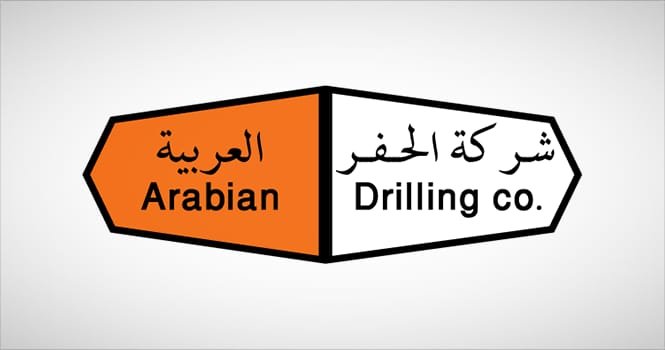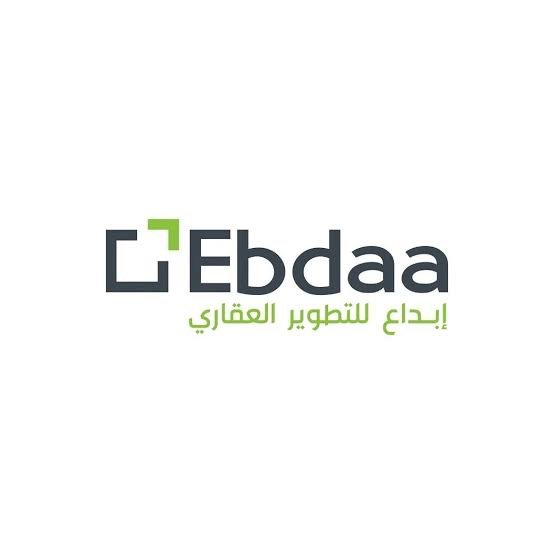
Ramssko Materials Testing Laboratory
Pioneers in the field of geotechnical studies, examination and testing of soil, concrete and construction materials

Ramssko Materials Testing Laboratory
❖ About Us
Ramssko Materials Testing Laboratory is a soil testing laboratory and one of the pioneering laboratories in the field of soil, concrete, and engineering and geotechnical testing, as well as the implementation of site investigation works in the Kingdom of Saudi Arabia. The laboratory has distinguished experience spanning several years in the fields of soil testing, geotechnical studies, concrete testing, asphalt, and other building materials. Ramssko Laboratory provides its services to a diverse group of clients such as public and private companies, contractors, and real estate developers. The laboratory is characterized by accuracy and professionalism in the implementation of all tests and analyses in accordance with the approved Saudi, American, and international standard specifications. Regarding our services, the laboratory analyzes and tests the soil to measure its ability to withstand structural loads, and also provides specialized geotechnical and structural studies to assess the condition and structural safety of existing buildings. It also conducts concrete and asphalt tests using the latest equipment and technologies to ensure the quality of materials used in construction projects. Ramssko Laboratory’s policy is based on a commitment to the highest standards of quality and reliability, where all tests are carried out by a team of qualified experts, engineers, and technicians, using the latest technologies and equipment in the field of engineering testing.

❖ Our Vision
We aspire to be pioneers in the field of geotechnical studies, soil and concrete testing, and construction materials, as we aim to be the primary reference for our clients in providing high-quality and accurate services.
❖ Our Mission
We strive to build long-term relationships with our clients by providing services that exceed their expectations, and by delivering precise and reliable test results that contribute to the achievement of their goals in the shortest possible time.


❖ Our Goal
We aim to develop and improve our services and technologies to stay up-to-date with the latest standards and innovations in the field of soil testing, construction, and inspection.
❖ Our Values
Continuous improvement of our services
Building strong & sustainable relationships
Providing training opportunities for our team
Commitment to the highest quality standards
Application of environmental sustainability practices
Adoption of the latest
innovative technologies
Commitment to
socialresponsibility
❖ Why Ramssko ?
- Use of advanced techniques and modern equipment for inspection and testing.
- Our team includes a group of highly experienced engineers and technicians in geotechnical engineering and engineering tests.
- We are committed to providing approved, accurate, and documented results, using advanced technologies and modern equipment.
- Commitment to the specified schedule to complete the work efficiently and effectively, while maintaining the highest quality standards.
- Providing transparent reports that clearly explain all results in detail, which helps our clients make the right decisions.
❖ Our Services
❖ Soil Tests
At Ramssko laboratory, we provide comprehensive services for soil testing and implementation of borehole works, using the latest tools and advanced technologies, and under the supervision of a team of experts with high experience in this field. We aim to provide accurate and reliable data that meet the needs of any engineering project with the highest levels of quality.
These tests include:
- Field Tests: Including Standard Penetration Test (SPT), Cone Penetration Test (CPT), Vane Shear Test, Soil Permeability Determination, Standard Compaction Test (Sand Cone), Plate Load Test, and Monitoring Well Test
- Laboratory Tests: Including soil classification, moisture content, Atterberg limits, grain size analysis, free swell, unit weight, relative density, specific gravity, direct shear test, consolidation test, float test, and chemical analyses.
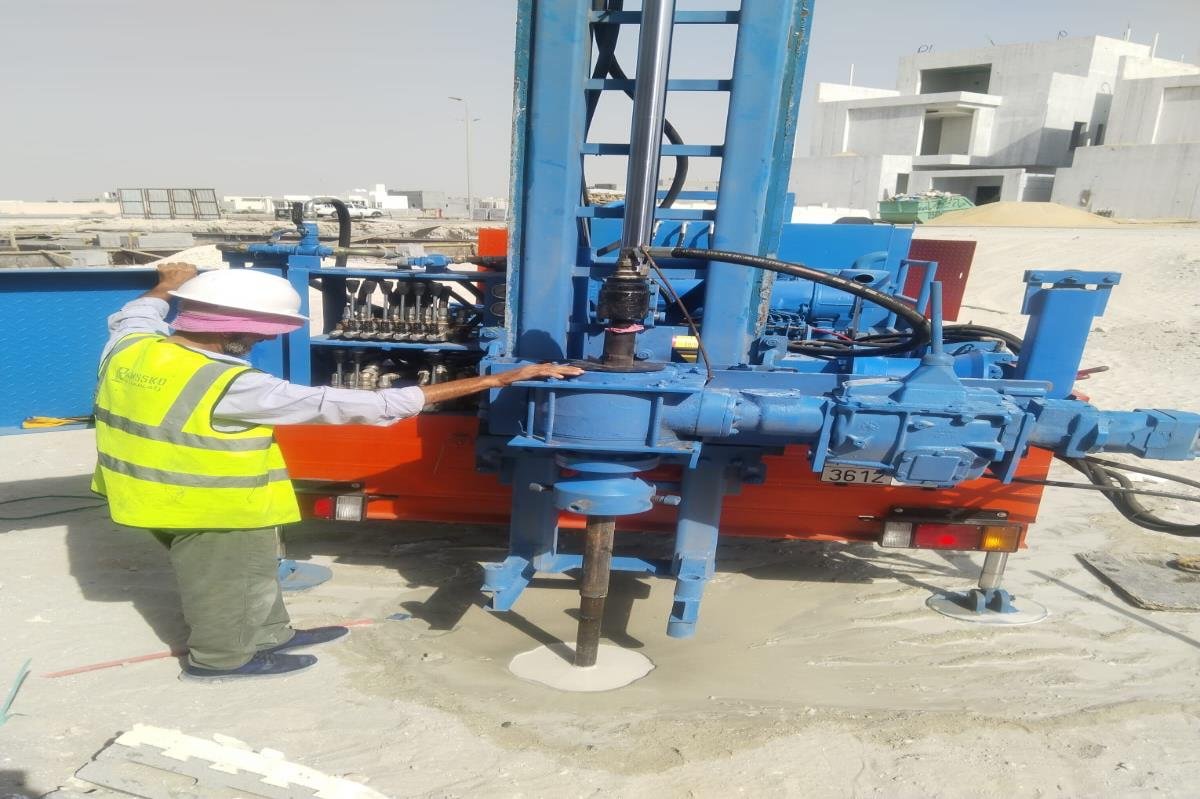
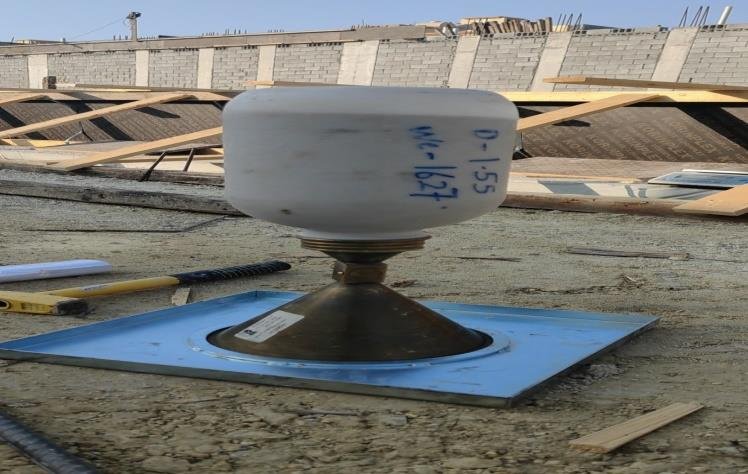

❖ Compaction Test
❖ Plate Load Test
The plate load test is used to estimate the bearing capacity of homogeneous soil and the amount of settlement for soils from which it is difficult to extract intact samples, such as sand and cracked clay, as well as to test the effectiveness of compaction of gravelly soils.
- A square loading plate with a side length of 300 mm or a circular plate with a diameter of 300 mm and a thickness of 25 mm is used. Sometimes, a square loading plate with dimensions of 706 mm is used.
- The plate is equipped with settlement measuring devices with an accuracy of 0.02 mm.
- The test requires a water level, settlement measuring tools, and a stopwatch.
- The results show the type of loading device used and the settlement details with precision.



❖ Concrete Tests
The Ramssko laboratory provides comprehensive services in concrete quality testing and supervision of concrete pours, using the latest technologies to ensure compliance with required specifications and standards.
These tests include :
A - Determining and monitoring temperature: The temperature of the concrete is measured and monitored during pouring to ensure it meets the required standards and specifications.
B - Determining the concrete slump value ( Slump Test ) : This test is used to determine the concrete's flowability and its ability to be poured without cracking.
C - Determining the air voids ratio in the fresh concrete sample ( Air Voids ) : The percentage of voids in the concrete is measured to verify its efficiency and durability.
D - Taking cubic and cylindrical concrete samples on-site, preserving, and processing them according to engineering standards, which helps in evaluating their quality and conformity to standards.
E - Concrete elasticity test: This test is performed to determine the concrete's ability to withstand deformations and vibrations during its service life.
F - Concrete shrinkage test: Used to determine the concrete's capacity for endurance and stability which helps in evaluating its long-term performance.
❖ Construction Materials Tests
The Ramssko laboratory provides high-performance and quality services in construction materials testing, to ensure the quality and conformity of the materials used in construction to the required specifications and standards. The laboratory's services include tests for the following construction materials:
- Steel: Tests to determine the properties of the steel used in building structures, such as tensile strength, bending, and welding.
- Cement: Tests to evaluate the quality of the cement used in concrete, such as compressive strength tests and chemical analysis.
- Stone: Evaluation of the properties of the stone used in construction, such as durability and bearing capacity.
- Sand: Tests to determine the void ratio and compressive strength of the sand used in concrete and other construction materials.



❖ Asphalt Tests
The Ramssko laboratory provides comprehensive services in performing all field and laboratory tests for asphalt, as well as preparing cement mixes in the laboratory and conducting the necessary tests (temperature, thickness, and asphalt compaction strength).
❖ Structural Evaluation of Existing Buildings
The structural evaluation process begins with a general inspection of the facility, followed by a comprehensive structural analysis, including:
- Visual Inspection and Examination: Includes inspection of all parts and areas of the buildings.
- Providing the required test plan: Ensures compliance with the design principles, codes, and general specifications.
- Conducting the Tests: Carried out using the approved methods and techniques in the relevant engineering codes, and include:
- Non-destructive tests: such as Schmidt hammer and ultrasonic waves.
- Semi-destructive test: such as core testing.
- Destructive test: such as load testing according to the code.
- Chemical tests.
- Structural Evaluation Reports
Separate reports are provided, including:
- The safety condition of the facilities and elements under test.
- A report on the structural safety of the buildings, containing all information and data.
- Proposed repair and treatment methods.
- A sequential system of the treatment process and repair methods for each structural element with a coded numbering and diagram.
- Approved reports and final recommendations.






